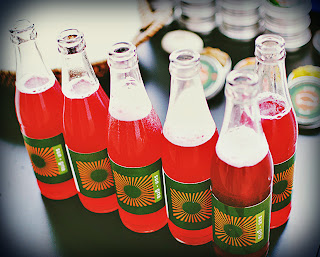Religion in Bali is present everywhere and every day. It is literally a way of life where ceremonies mark every single step a Balinese takes and every event he or she experiences.
Hinduism came to Indonesia from India in the 5th century, was first replaced by Buddhism and later in the 14th century by Islam. However, Bali was the only part of Indonesia to remain Hindu and despite the foreign influence generated by tourism still until now Balinese people worship an elaborate array of deities: of fertility, fire, water, earth, sun, the mountains and the sea, gods and devils…
 |
| Several types of Canang |
No matter where you are in Bali, you only need to look around to see signs of religion in every corner: the “canang” or traditional baskets reign over the island filled with the most unusual gifts to the Gods such as a candy, a tangerine, some frangipani flowers, a banana or a salak fruit, some leaves, even a cigarette! Balinese start each day by buying these items in their traditional markets, they then arrange them nicely in coconut-leaf baskets and finally they pray while placing them in strategic locations around houses or workplaces. These offerings are meant to thank the good spirits and appease the evil ones, keeping the balance between good and bad in the island.
 |
| Teeth filing ceremony |
Apart from these daily rituals, ceremonies are a major aspect of the Balinese lifestyle and culture. From birth to death the Balinese celebrate a variety of milestones or rites of passage that they believe will guide the soul through the numerous stages of life. Some of these celebrations can be really shocking from a Western perspective, as it is the tooth-filing ceremony. This very significant ritual marks the step from puberty to adulthood for both males and females and it consists of filing down the canine teeth (the pointy ones) until they are even with the other teeth around them as they are considered animal-like and getting them shortened symbolizes the smoothing out of the animal aspects in a human's personality. If for whatever reason a person has not undergone this ceremony by the time he/she dies, then it will have to take place prior to his/her cremation, as the Balinese believe that the gods may mistake a human for a savage animal if his/her teeth are not filed.
Until recently, Kevin and I were exposed to religion in Bali just by watching the locals in their immaculate ceremonial clothes buying or preparing the offerings, walking to the temples, praying to holy trees... Or as we waited anxiously in traffic for a cremation procession to enter or leave a temple. Or when we witnessed from time to time the taking over of a beach by a group of worshippers to release their offerings into the ocean. But, as I promise to reveal in my next post, religion is now also part of Cuca and of our daily tasks and accomplishments.
It’s time to go, Cuca’s dining room is filling up and dinner service begins!























